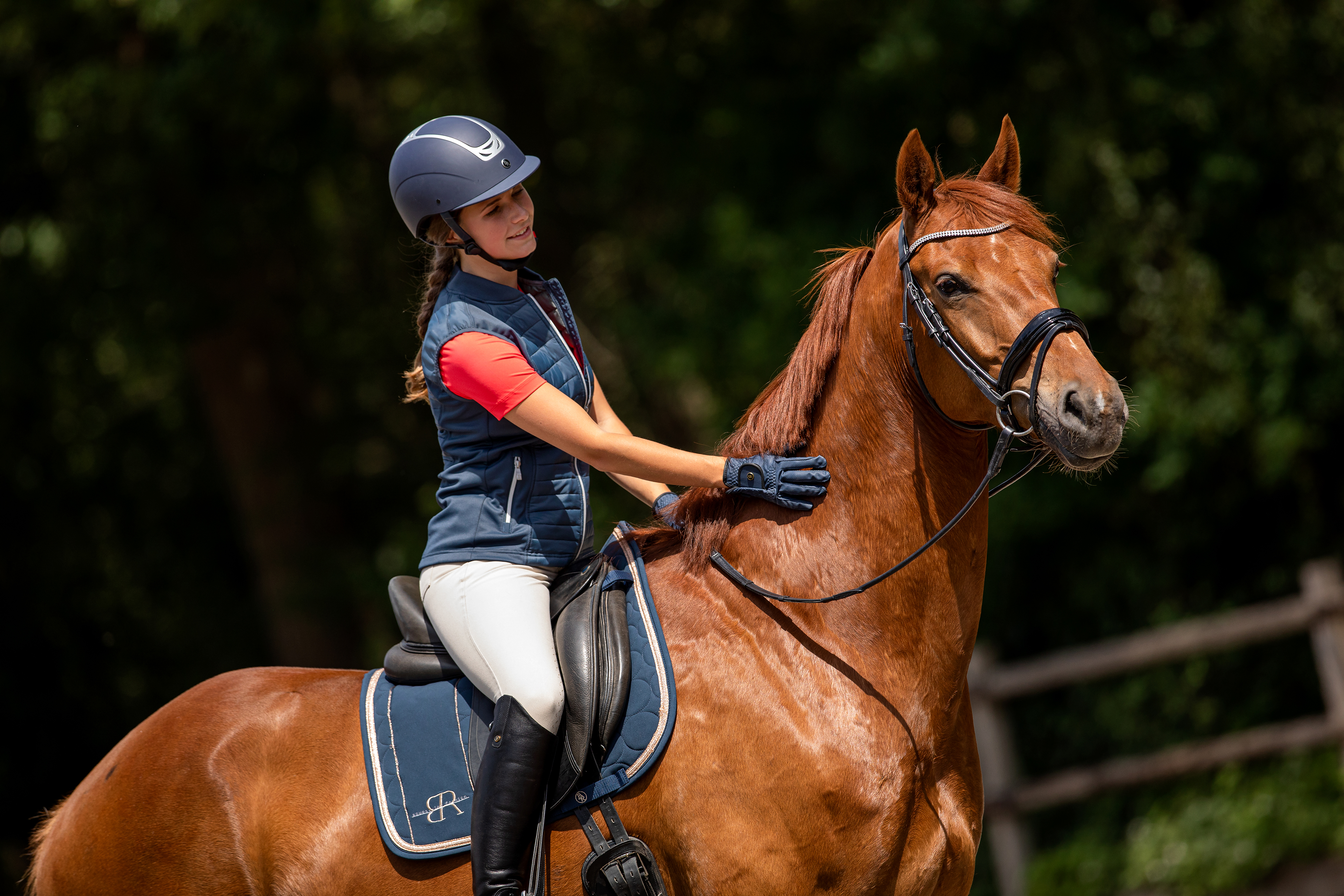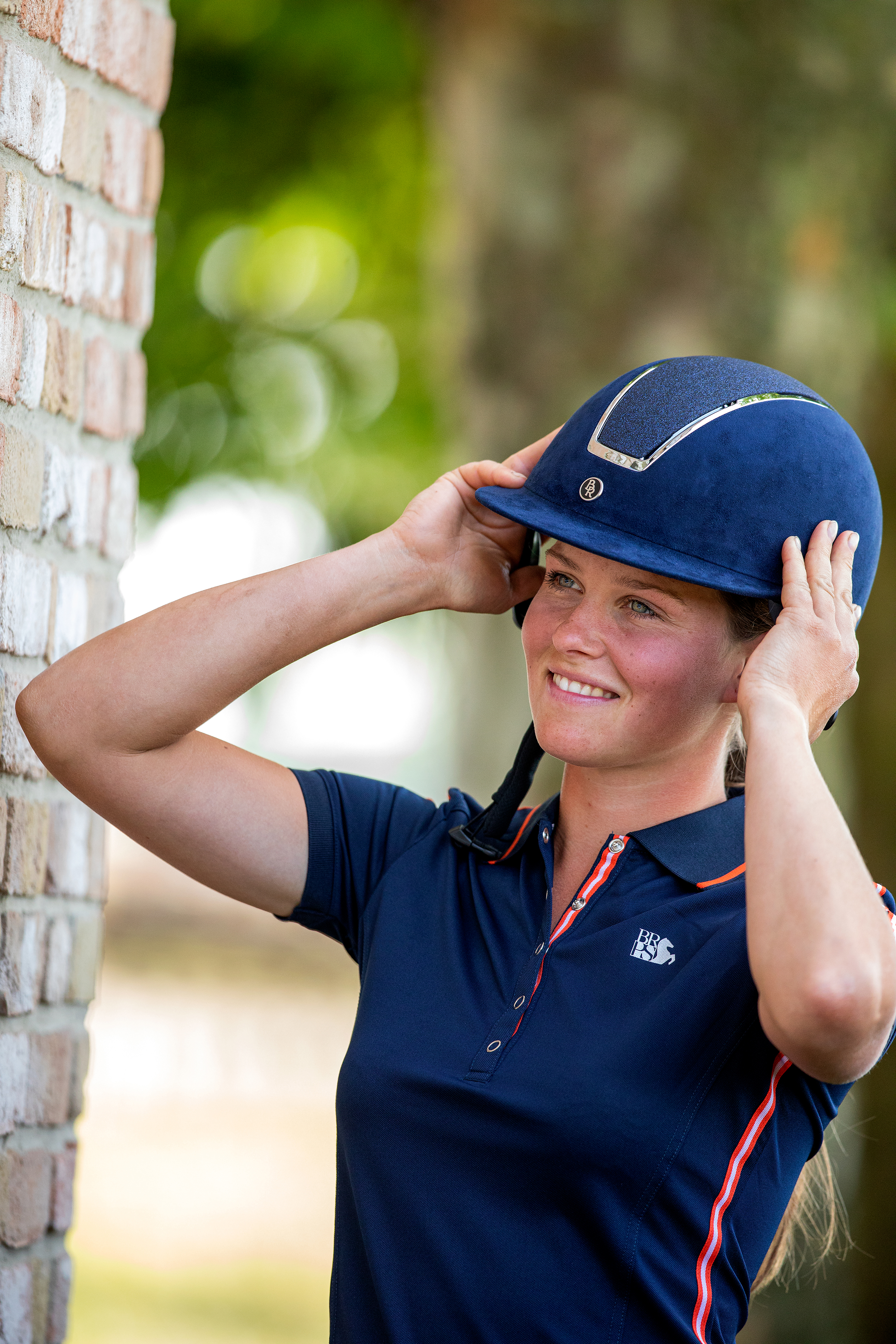Today is International Helmet Awareness Day, which means that today extra attention is given to why riding helmets are so important. To help you make the right helmet choice, we're explaining in this blog what you need to consider when buying a riding helmet and when it needs to be replaced.

What should you pay attention to?
When buying a new riding helmet, make sure to check if the helmet meets the safety standards. It's important that the helmet has the 89/686/EEC mark. When the helmet is bought in a equestrian shop within Europe, you can assume that the cap meets the quality mark. Meanwhile, there is also a new quality mark, namely the VG1 quality mark, for which helmet have to pass a heavier tess with extra importance on shock absorption, resistance, strength and stability. Does your helmet not have the VG1 quality mark? That's no problem, as long as your helmet meets the 89/686/EEC mark, it's sufficient.
To be sure, always check which safety standards your helmet complies with. You can find this on the inside of your helmet.
Not so long ago a new technology for helmets has been introduced: MIPS technology. MIPS stands for Multi-Directional Impact Protection System. The system is designed to protect you from brain damage when your head makes a twisting movement during a fall. This technology was previously already used on, for example, skate helmets and ski helmets.
Finding your helmet size
Before you even start looking for a new helmet, you need to know your correct helmet size. Measure the circumference of your head by wrapping a flexible measuring tape around it. The tape needs to be 2.5 cm or about 2 fingers above your eyebrow and flatly wrap around the entire head back to the starting point. The point where the tape touches again is the size of your helmet in centimeters, which is usually also the standard sizing unit for helmets on our website. If you measured 55 cm for example, you need to look for helmets that have size 55 cm or if they give a size range (due to being adjustable in size), pick the helmet where 55 cm is included.
Buying a new helmet
Nobody buys a helmet they don't like, and that of course makes sense. But you shouldn't sacrifice looks and style for protection and safety. A helmet should fit well and feel comfortable, in order to be able to offer optimal protection. When you try on a helmet it shouldn't feel and fit too tight or loose, but instead apply equal pressure all around. To know if you tried the right size, you can do a simple test. Put the helmet on without fastening the chin strap and tilt your head forward. Does it fall of your head? Then it doesn't fit, so take a size smaller and try again. A handy tip: have your hair exactly the same as you do when you're riding, so you're not getting some unexpected surpises later, when the helmet may not feel comfortable anymore with your normal hairstyle.
With some many different types and styles of helmet, the choice isn't easy. Besides the fact that the helmet fits well, it's also important that it ventilates enough. Nobody likes having a bright red face on the horse and feeling like you immediately need to take a shower after riding because your hair is so sweaty. There's also a huge difference in costs, the price range is very big. The most expensive helmet doesn't always have to be the best thoguh. The difference often lies in the materials the helmet is made of, the details and decorations, durability and the warranty.

When does a helmet need replacing?
Because a helmet should always offer sufficient safety, it's advisable to buy a new helmet every 5 years. It doesn't necessarily mean that the protective purposes of your riding helmet have decreased, but the material may have become weaker, more easily breakable and fallen subject to some wear-and-tear. Your head should definitely be important enough to you to justify spending some money on a new helmet every few years!
Every riders falls of their horse every once in a while. The chance is big that your helmet is damaged after a fall, even if it's often not visible. Is your helmet of an expensive brand? Then there's often the possibility to have your helmet checked for its protection level. Can't have your helmet checked? Then it's wise to replace it with a new one to ensure you're head will stay safe. It's also worth noting that the helmet doesn't have to necessarily fall with a rider in order to be damaged - it just has to fall in general.
Check out our assortment here and find your perfect riding helmet!